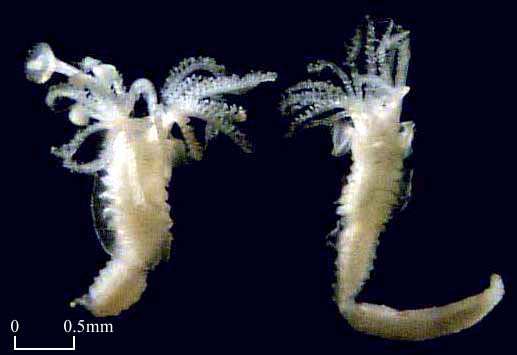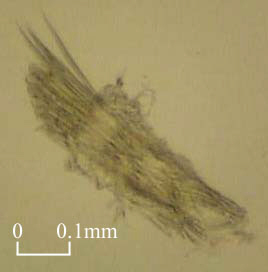Order Sabellida
Family Serpulidae
Features |
| Body: |
small and short |
| Prostomium: |
reduced and fused with peristomium |
| Peristomium; |
form a large tentacular
crown with one operculum modified from a radiole |
| Eye: |
absent |
| Antennae: |
absent |
| Cirri: |
absent |
| Palp: |
absent |
| Pharynx: |
non-eversible |
| Parapodium: |
biramous or reduced |
| Thorax setea: |
notosetae limbate
capillaries; neurosetae uncini |
| Abdominal setae: |
notosetae uncini;
neurosetae capillaries |
| (Day 1967) |
Biological Notes
Serpulids
are suspension feeders. Their branchial crown at the head region is for
respiration and filter-feeding. The tubes are calcareous and the entrance is
plugged by a stalked operculum formed from a modified radiole of the branchial crown.
The operculum is for protection and reducing water loss. When alarmed they
retract very rapidly as it has well developed giant nerve
fibers. The tubes of Serpulids are usually attached to rocks, corals,
ships' hull, piers, seashells or other hard objects. Hydroides norvegica
appears to prefer floating objects such as buoys and ships' hull so it has a cosmopolitan
distribution (Day 1967).
Serpulids
are fouling organisms that damage to ships' hull, piers, water pipes, seashells and any
artificial surfaces submerged in seawater, causing increased maintenance cost and the risk
of mechanical failure. In China, they reduce the yield of economically
important seashells (Yang and Sun 1986).
Genera and Species Reported in Hong Kong
Hydroides elegans |

